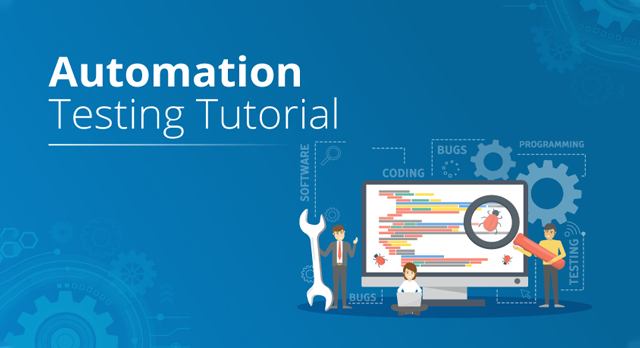Effective Automation Testing: Enhancing Software Reliability and Rate
Effective Automation Testing: Enhancing Software Reliability and Rate
Blog Article
From Manual to Automated Testing: A Comprehensive Guide to Transitioning Smoothly and Effectively
In the realm of software screening, the shift from guidebook to automated processes has actually ended up being an increasingly essential shift for companies seeking to improve efficiency and precision in their testing methods. The journey from handbook to automated testing is not without its obstacles, but when come close to tactically and with a clear strategy in mind, the advantages can be substantial.
Benefits of Automated Examining
Automated screening offers many advantages, improving performance and accuracy in software program advancement procedures. One primary benefit is the substantial reduction in testing time. Automated examinations can be run at the same time on several tools and operating systems, drastically accelerating the screening phase contrasted to manual testing. This raised efficiency permits faster responses on the quality of the software application, making it possible for developers to determine and resolve issues without delay.
Moreover, automated screening makes sure a greater degree of accuracy in identifying issues. Since automated tests adhere to predefined manuscripts, human mistake is decreased, bring about even more trusted examination outcomes. Consistency in testing is also improved, as automated examinations implement the very same actions exactly each time they are run. This consistency is essential in ensuring that all functionalities of the software program are extensively checked, lowering the possibility of unnoticed pests sliding through to production.
Choosing the Right Devices

First of all, evaluate your objectives and requirements. Understand the extent of your task, the modern technologies entailed, and the ability set of your team. This analysis will certainly aid you establish the attributes and capacities you require in your testing devices.
Second of all, think about the compatibility of the tools with your existing procedures and systems. Seamless integration with your current software program growth lifecycle is vital to make sure a smooth transition to automation.
Additionally, review the scalability and versatility of the tools. As your testing requires progress, the tools need to have the ability to adapt and suit modifications efficiently.
Lastly, variable in the support and area around the devices. Robust assistance and an active customer neighborhood can provide beneficial resources and assistance when carrying out automated testing. By very carefully considering these facets, you can select the right devices that align with your demands and established the stage for an effective transition to automated screening.
Writing Efficient Examination Scripts

When crafting test manuscripts, it is important to consider the details demands of the software program being checked and ensure that the useful site manuscripts address all important performances. Descriptive and clear calling conventions for test scripts and examination situations can enhance readability and maintainability. In addition, incorporating error handling mechanisms within the test scripts can aid in determining and addressing problems immediately.
In addition, arranging test manuscripts into modular elements can boost reusability and scalability, decreasing redundancy and improving performance in test script upkeep. Normal reviews and updates to evaluate manuscripts are crucial to equal advancing software demands and performances. By following these concepts, testers can develop reliable and durable examination manuscripts that contribute considerably to the success of automated testing procedures.
Integrating Automation Into Workflows
By effortlessly incorporating automated screening tools like Selenium or Appium right into the software advancement lifecycle, teams can accomplish faster feedback on code adjustments, leading to quicker bug discovery and resolution. This integration permits for continuous screening throughout the development process, making certain that any type of concerns are determined early on, resulting in greater software high quality. Correct combination of automation devices requires partnership in between development, testing, and procedures teams to establish a unified process that maximizes efficiency and performance in delivering premium software program products.
Making Sure a Smooth Change
Successfully transitioning to automated testing includes thorough planning and careful implementation to minimize disturbances and make best use of performance in the software development process - automation testing. To make sure a smooth change, it is necessary to start by conducting a complete analysis of the existing screening procedures and recognizing locations where automation can bring one of the most substantial advantages. Involving with all stakeholders beforehand in the process, consisting of developers, testers, and project supervisors, is crucial for garnering support and buy-in for the automation initiative
Interaction is vital throughout this change stage. Clear interaction of the goals, benefits, and expectations of automated screening aids to take care of any type of resistance or worries that may develop. In addition, providing appropriate training and sources for team members to upskill in automation devices and strategies is essential for guaranteeing an effective transition.

Verdict
To conclude, transitioning from manual to automated testing uses many advantages, consisting of raised performance and reliability. By selecting the suitable tools, writing effective test scripts, and integrating automation perfectly into workflows, organizations can guarantee a smooth and successful transition. It is important to accept automation as an important asset in software testing procedures to boost total top quality and efficiency.
In the world of software application testing, the shift from guidebook to automated procedures has actually ended up being a progressively vital transition for companies looking read this for to improve efficiency and precision in their screening methods. Automated tests can be run simultaneously on here are the findings numerous tools and operating systems, considerably speeding up the testing stage compared to manual screening. Uniformity in testing is additionally enhanced, as automated tests execute the very same steps specifically each time they are run.To make sure the successful implementation of chosen testing devices, the development of effective examination scripts plays a critical function in validating the capability and performance of automated procedures - automation testing. By complying with these concepts, testers can produce effective and durable test manuscripts that contribute substantially to the success of automated testing procedures
Report this page